The Sound of '74: 10 Landmark R&B Albums Turning 50 This Year
- Oops!Something went wrong.Please try again later.
- Oops!Something went wrong.Please try again later.
- Oops!Something went wrong.Please try again later.
- Oops!Something went wrong.Please try again later.
- Oops!Something went wrong.Please try again later.
- Oops!Something went wrong.Please try again later.
Learn more about the making of iconic albums by Stevie Wonder, Aretha Franklin, Al Green and more.

getty
The year 1974 saw a host of legendary Black performers reach the peak of their powers, with icons like Stevie Wonder, Al Green, Millie Jackson and Aretha Franklin releasing works that defined both their careers and the decade through bold sonic innovations or powerful social commentary. It was a transitional time for the sound of Black America, as the ever-expanding scope of R&B grew to include emerging genres including funk, disco and even early hip-hop. In celebration of Black History Month, learn about — and listen to! — these landmark works by some of the greatest Black artists of all time.
'Perfect Angel' by Minnie Riperton
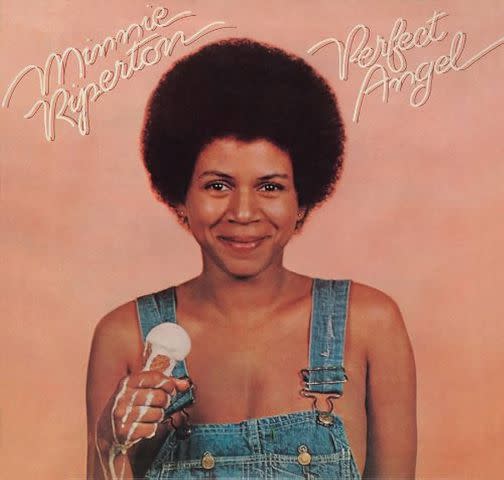
Released: Aug. 9, 1974
Standout Tracks: “Lovin’ You,” “Reasons,” “Take a Little Trip”
After spending the 1960s as a studio backing vocalist (you can hear her on Fontella Bass’ thunderous 1965 hit “Rescue Me”) and logging hours in strong but unsuccessful R&B groups like the Gems and Rotary Connection, Riperton’s ‘70s were off to a difficult start. When her solo debut, 1970’s Come to My Garden, proved a commercial disappointment, she abandoned her music career and settled in Florida with her producer-songwriter husband Larry Rudolph to raise their children — including future SNL star Maya Rudolph.
Her professional fortunes changed when an intern at Epic Records discovered her demo of the song “Seeing You This Way” and brought it to the attention of the label brass. A recording contract soon followed, which yielded her solo breakthrough, Perfect Angel. Boasting a production co-credit from Stevie Wonder — who also penned the album cut “Take a Little Trip” — the record was a slow-seller at first, with singles like “Reasons,” "Every Time He Comes Around" and "Seeing You This Way" failing to take off. But then Riperton insisted that Epic release a fourth single, the smooth ballad “Lovin’ You,” which showed off her angelic five-octave vocal range. The song went to No. 1 in April 1975 and helped make Perfect Angel a gold-selling classic. But Riperton’s story has a tragic coda: in 1979 she succumbed to breast cancer at age 31.
'Can’t Get Enough' by Barry White
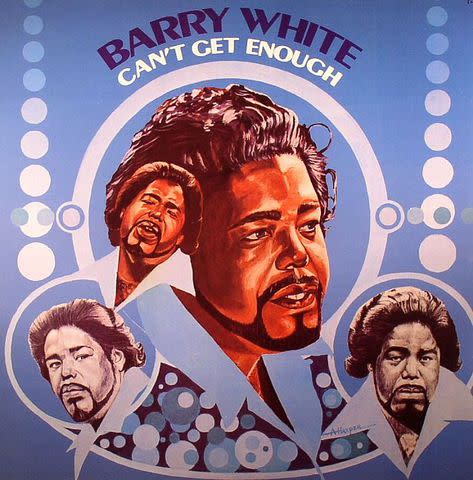
Released: Aug. 6, 1974
Standout Tracks: "Can't Get Enough of Your Love, Babe,” "You're the First, the Last, My Everything"
Far more than just a velvet-voice, White was a writer, producer, arranger and key pioneer of the developing disco sound thanks to his run of early ‘70s solo albums that fused Memphis funk, Philly Soul, lush strings, and infectious four-on-the-floor beats with his unmistakable stage-rattling croon. Can’t Get Enough, his third solo disc, is the maestro at his peak. "Can't Get Enough of Your Love, Babe,” the lead single, became his first No. 1 under his own name, and “You’re the First, the Last, My Everything” — which began life as an unreleased country song from the 1950s before White reworked it — remains a sultry R&B standard half a century after its release.
The amped-up romance came from a real place for White. While producing the R&B group Love Unlimited, he fell in love with their singer, Glodean James. During one sleepless night, he poured his passionate sweet nothings for James into a song that became the title track. They were married by the time it topped the charts that September.
'Let Me in Your Life' by Aretha Franklin
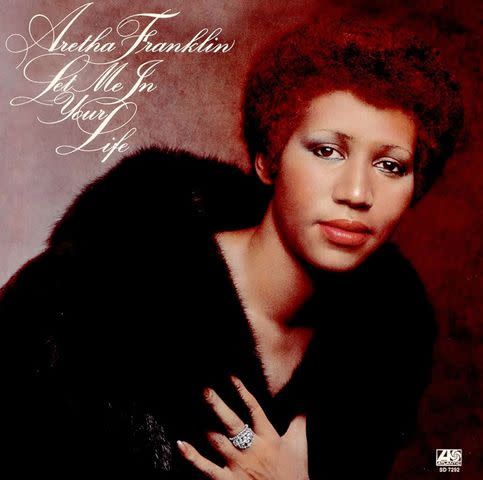
Released: Feb. 25, 1974
Standout Tracks: “I’m in Love,” “Ain’t Nothing Like the Real Thing,” “Until You Come Back to Me (That’s What I’m Gonna Do)”
The 31-year-old diva was 20 albums (!) into her career and seven years into her reign as the Queen of Soul when she delivered the last album of her commercial hot streak with Atlantic Records producer Jerry Wexler. The material was certainly sterling, with the title track by the great Bill Withers and a version of “Until You Come Back to Me (That’s What I’m Gonna Do)” that might best Stevie Wonder’s original — not to mention songs by the likes of Bobby Womack and Eddie Hinton. She also had help from musical luminaries like soul great Donny Hathaway on keyboards, session legend Bernard Purdie on drums, and longtime backup singer Cissy Houston.
The radical reimagining of the Marvin Gaye/Tammi Terrell duet “Ain’t Nothing Like the Real Thing” as a slow-burning torch song earned Franklin her eighth Grammy (this time for best female R&B vocal performance) and helped propel Let Me in Your Life into the Top 20 on the pop charts for what would be her last time for a decade. Arguably the most poignant moment is the closer, Leon Russell’s instant standard “A Song for You.” It’s a plaintive plea for forgiveness to an estranged partner, sung from the perspective of a weary show-biz vet who spends their days “acting out my love on stages with ten thousand people watching.” Given Franklin’s tumultuous personal life, the lyrics surely took on a special significance.
'Al Green Explores Your Mind' by Al Green
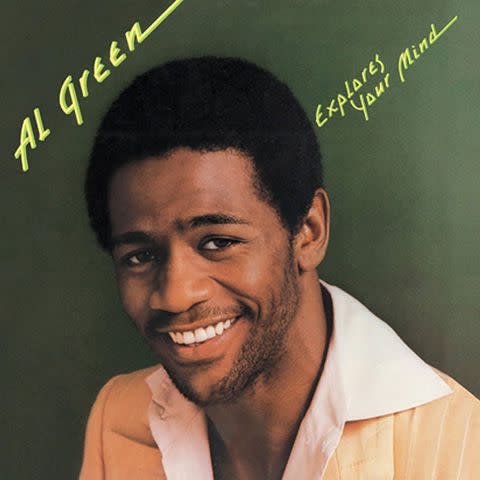
Released: October 1974
Standout Tracks: “Take Me to the River,” "Sha-La-La (Make Me Happy)”
Green built on the momentum of Memphis Sound mainstays like Let’s Stay Together, I’m Still in Love with You and Call Me with this ‘74 juggernaut that paired him once again with longtime producer Willie Mitchell. With seductively intimate vocals bolstered by James Mitchell’s dreamy string arrangements, Al Green Explores Your Mind ranks among the best of his Hi Records output. In addition to the Top 10 hit "Sha-La-La (Make Me Happy),” the album is probably best remembered for containing the original version of the gospel-tinged “Take Me to the River,” later covered by everyone from Levon Helm and Foghat to Bryan Ferry, Annie Lennox and (most famously) the Talking Heads.
Green’s life would be marred by tragedy just days after the album’s release that October, when girlfriend Mary Woodson assaulted him by pouring a pot of boiling grits on his bare torso, resulting in second-degree burns on his back, stomach, and arms. Moments later, she fatally shot herself with his .38 handgun. Green would say the incident forced him to reevaluate his life, and ultimately led him to God. He would join the ministry at the end of the ‘70s and renounce secular music for the better part of a decade.
'Nightbirds' by LaBelle
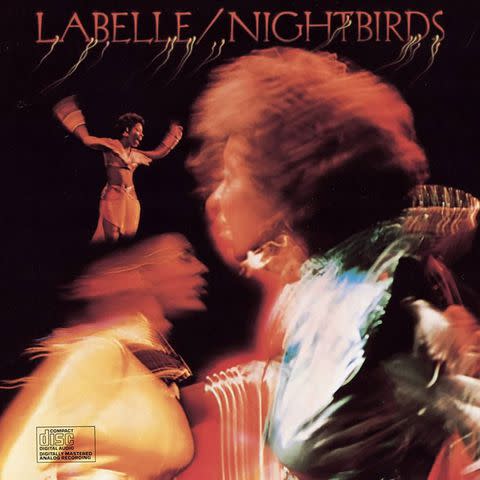
Released: Sept. 13, 1974
Standout Tracks: “Lady Marmalade,” “What Can I Do For You?”
Patti LaBelle, Nona Hendryx and Sarah Dash completed their metamorphosis from ‘60s girl-group the Bluebelles into glamorous ‘70s funk titans LaBelle by holing up in legendary New Orleans producer Allen Toussaint’s Sea-Saint Studios with a murderer’s row of R&B heavy hitters — including keyboardist Art Neville (of the Neville Brothers) and the rhythm section from the Meters. The resulting album, Nightbirds, marries the soulful strut of Toussaint’s jazzy Big Easy roots (check "Don't Bring Me Down" and “All Girl Band”) with the avant-garde galaxy funk sensibilities of Hendrix, the group’s resident songwriter (and supposed cousin of Jimi) who penned “Space Children” and the title track.
But Nightbirds will forever be defined by the Bayou bordello bawdiness of “Lady Marmalade.” Surprisingly, the song was co-written by Bob Crewe, most famous for writing hits like “Can’t Take My Eyes Off You” and “Big Girls Don’t Cry” for Frankie Valli and the Four Seasons. Toussaint and his band of session champs provided the groove, and LaBelle did her swaggering best by delivering the immortal lyrical come-on: “Voulez-vous couche aves moi, c’est soir?” Hilariously, LaBelle would claim she had no idea that the French words translated to “Would you sleep with me tonight?” The scandalous lyrics didn’t keep the song off the radio, and it became a huge hit — topping Billboard for one week in the spring of 1975 and staying on the charts for 18 more.
The success of the song made LaBelle the first Black vocal group to appear on the cover of Rolling Stone, and the first Black pop group to perform at New York City’s Metropolitan Opera House. “We were groundbreaking, and it was an honor,” LaBelle told The Guardian in 2015. “It was showing other Black women that they could do it. But we weren’t trying to break a record, we were just being LaBelle.”
'Caught Up' by Millie Jackson

Released: October 1974
Standout Tracks: "(If Loving You Is Wrong) I Don't Want to Be Right," “Summer (The First Time)”
The Muscle Shoals legend’s first gold disc was an innovative concept album that documented two sides of a love triangle, dramatically illustrated on the cover with a threesome ensnared in a spider’s web. The songs on Side One — "I'm Tired of Hiding,” “All I Want Is a Fighting Chance" — are sung from the perspective of a heartsick mistress, while Side Two — "It's All Over But the Shouting," "So Easy Going, So Hard Coming Back" — offers the view of the wronged wife. (The two-timing man’s side of the story is left to the imagination.)
More than just a showcase for her formidable pipes, the “soul opera” provides Jackson with the opportunity to show off her acting chops, with riveting spoken-word passages that have led many critics to dub her the Godmother of Rap. “These were conversations that women had with each other at the Laundromat,” Jackson explained to Atlanta Magazine in 2014. “You didn’t hear them on records. You especially didn’t hear them on the radio.” These often risqué sections are offset by the album’s poignant closer, a cover of Bobby Goldsboro’s “Summer (The First Time).” Evoking a long ago sexual awakening, it’s both a melancholic memory of better times and a sobering reminder that you can’t go back.
With producer Brad Shapiro at the board and the golden era Muscle Shoals Rhythm Section for backup, infidelity never sounded so good. Both empathetic and unapologetic, Caught Up earned Jackson a Grammy nomination for her 10-minute version of Luther Ingram’s defiant "(If Loving You Is Wrong) I Don't Want to Be Right," which narrowly missed the Top 40. Though it would inspire a “sequel” disc, 1975’s Still Caught Up, the salacious social commentary of the original would be Jackson’s commercial peak.
'Open Our Eyes' by Earth, Wind and Fire
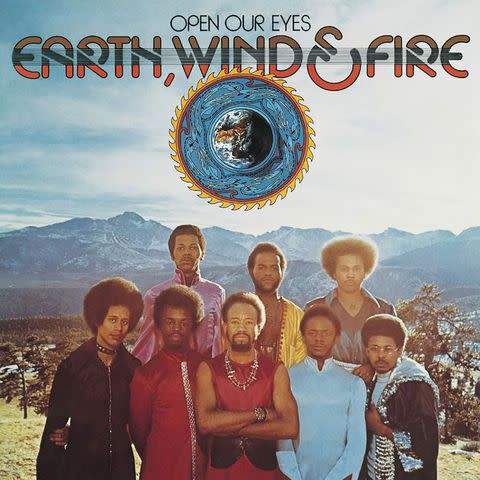
Released: March 25, 1974
Standout Tracks: “Mighty Mighty,” “Kalimba Story,” “Devotion”
Earth, Wind and Fire spent the early ‘70s solidifying their eclectic sound across four creatively daring albums that failed to connect with a mass audience. But the fifth time proved to be the charm with Open Our Eyes in 1974, when a public primed by proto-disco hits by Manu Dibango, George McRae and the Hues Corporation finally caught up. The opening one-two punch of “Mighty Mighty” and “Devotion” showcased their twin hallmarks — slick, snaking funk and interfaith mysticism blending everything from Christian gospel to Egyptology. “Kalimba Story” also became a minor hit, spreading the ancient African thumb piano across the airwaves for (arguably) the first time in the United States.
The album would be the group's crossover, setting the stage for a commercial run that would help define the decade. At the time, many in the music press didn’t know what to make of bandleader Maurice White’s soulful stew. Rolling Stone described it as an amalgam of Sly Stone, Stevie Wonder and the Fifth Dimension. But by the time “Shining Star” hit No. 1 the following year, it was clear that EWF were something else entirely.
'Rags to Rufus' by Rufus
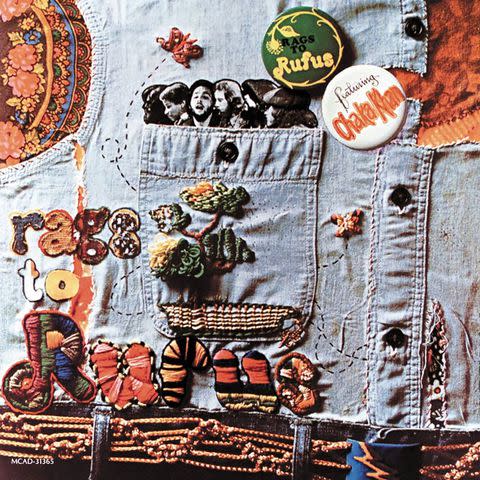
Released: May 1974
Standout Tracks: “Tell Me Something Good,” “You Got the Love”
In the 21st century, Rags to Rufus is known chiefly for two things. First and foremost, the record served as front woman Chaka Khan’s coronation as Queen of Funk, and indirectly laid the groundwork for her decades-long solo career. It also launched the Stevie Wonder-penned floor-filler “Tell Me Something Good” into the charts and onto countless dance party playlists thereafter. That’s a strong legacy for any album, but Rags to Rufus is so much more.
The record that broke the band out of their Chicago roots is a bewitching blend of soul, jazz and funk, all unified by Khan’s sensual vocals. She co-wrote the album’s other big hit, “You Got the Love,” with Ray “Ghostbusters” Parker Jr., and gave Ashford & Simpson’s “Ain't Nothin' but a Maybe” a serious workout. The record would garner a platinum certification from the RIAA and “Tell Me Something Good” netted them a Grammy, but this was somewhat of a last hurrah for Rufus. Soon after the release of Rags to Rufus, founding member Al Ciner departed the group, as did singer/keyboardist Ron Stockert and bassist Dennis Belfield — the man who gave their biggest hit its swampy groove. (PSA: There was never anyone named Rufus in the band; they borrowed their name from the Mechanics Illustrated advice column “Ask Rufus.”)
'Dancing Machine' by the Jackson 5ive

Released: Sept. 5, 1974
Standout Tracks: “Dancing Machine,” “I Am Love,” “Whatever You Got, I Want”
Before they matured into The Jacksons and left their longtime Motown home for Epic Records, the famous five from Gary, Indiana book-ended their boyband days with their most electrifying sides since kicking off the decade with “I Want You Back” and “ABC.” While the young men bristled under Berry Gordy, the autocratic label chief who chose their songs by committee and barred them from playing their own instruments, it’s hard to argue with the results.
A loose concept album steeped in funk-flecked disco, Dancing Machine was a vocal showcase for the quintet — particularly Jermaine and a newly grown-up Michael. The group returned to the Top 10 for the first time in three years thanks to the title track, an ode to Charles Washington’s famous “Robot” dance, which peaked at number two — an impressive showing for a group that Gordy and Co. had all but given up for dead in favor of individual solo careers. The breezy ballad “I Am Love” also cracked the Top 20, though Michael would cite "If I Don't Love You This Way" and "What You Don't Know" as his personal favorite album cuts. The J5 would release one more LP for Gordy, 1975’s Moving Violation, but it was clear the Motown magic was gone.
'Fulfillingness’ First Finale' by Stevie Wonder
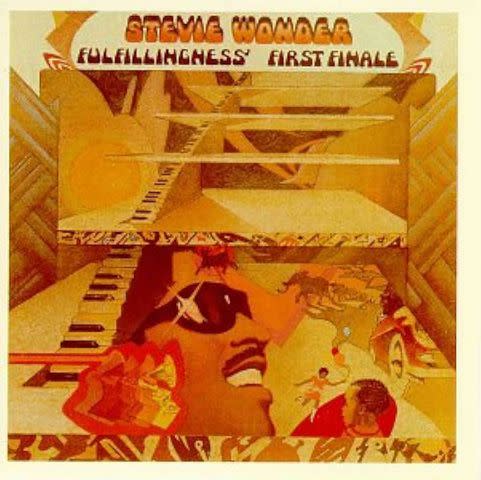
Released: July 22, 1974
Standout Tracks: "Boogie On Reggae Woman,” "You Haven't Done Nothin'"
Often outshone by 1976’s sprawling Songs in the Key of Life or the heady social consciousness of 1973’s Innervisions, Wonder’s Fulfillingness First Finale is a crucial pillar of his early ‘70s “classic” period. The deeply personal work came in the wake of a near-fatal car accident in the summer of ‘73 that left the 23-year-old in a coma for several days and temporarily robbed him of his sense of taste and smell. “The only thing I do know is that I was unconscious and that I was definitely, for a few days, in a much better spiritual place,” he told The New York Times from his hospital bed. “[It] made me aware of a lot of things that concern my life and my future and what I have to do to reach another higher ground.”
The resulting album, begun shortly after he was discharged, reflects this reappraisal in his music and even the cover art — a kaleidoscopic recap of his life to date. The impact of his traumatic accident is most directly evident in the funereal “They Won’t Go Where I Go,” a modern hymnal meditating on the mystery of faith. But most of the album finds Wonder reexamining his romantic relationships, from the tentative early overtures of “Too Shy to Say,” to the lusty daydreams of “Creepin,’” and ultimately the final goodbyes of “It Ain’t No Use” and “Please Don’t Go.”
Though clearly the maestro, Wonder calls in some big names for backup. Fulfillingness features help from Minnie Riperton, Paul Anka, Motown session bassist/funk-machine James Jamerson, steel guitar virtuoso Sneaky Pete Kleinow, and even the Jackson 5ive — who sing backup on “You Haven’t Done Nothin’,” a scathing critique of soon-to-be ex-President Richard Nixon. Released as a single the day before Tricky Dick announced his resignation that August, it topped the charts, followed soon after by the electronic groove of “Boogie on Reggae Woman.” Fulfillingness’ First Finale would ultimately earn Wonder his second of three consecutive Album of the Year Grammys — an achievement that has never been equaled.
For more People news, make sure to sign up for our newsletter!
Read the original article on People.

